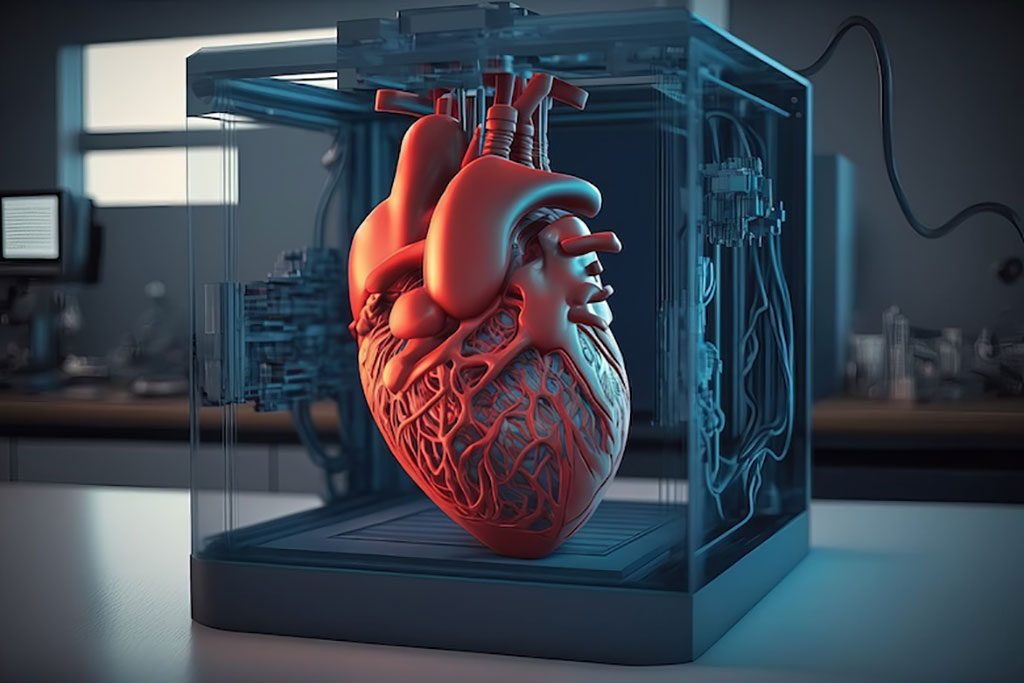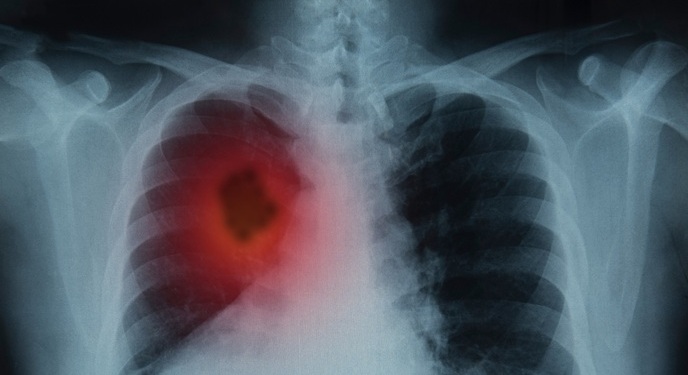3D Printed Heart Models Could Enable Non-Invasive Diagnosis of Aortic Stenosis
|
By MedImaging International staff writers Posted on 11 Apr 2023 |

Aortic stenosis is a condition characterized by calcified and thickened aortic heart valves, which impede blood flow. Existing methods for assessing the severity of aortic stenosis, like Doppler echocardiography, can be prone to uncontrolled errors and often necessitate invasive pressure measurements for patients. No, aortic flow phantoms could provide a potential solution to this issue.
Researchers at King’s College London (KCL, London, UK) have made progress in utilizing 3D printed heart models (phantoms) to simulate and investigate aortic stenosis. Computer modeling and 3D printing of aortic flow phantoms present an alternative to in vivo studies, which are associated with challenges in patient recruitment and potential procedural risks. In contrast, the simulated option allows for greater variations in blood pressure flow and drop. The researchers created a non-invasive technique for evaluating pressure recovery distance based on blood flow momentum using 4D Flow cardiovascular magnetic resonance (CMR). Their findings revealed that pressure recovery distances in aortic stenosis are longer than previously recognized, indicating a need to reevaluate currently adopted interventional practices.
Furthermore, the researchers developed and successfully tested a flow phantom compatible with MRI and ultrasound, which accurately simulates valve opening and closing in both healthy and diseased conditions and offers ground-truth pressure measurement. The team's findings suggest that the peak-to-peak pressure drop, a current metric for assessing the burden of aortic stenosis, may be influenced by factors unrelated to the valve, such as wave reflection, and should be reexamined in clinical practice.
“By developing valve models that behave like real human valves, new techniques which more accurately characterize the severity of disease can be developed and improved without disrupting patients' care,” said Harminder Gill, BM BCh.
“The decision on how and when to treat stenotic valves is complex and the diagnostic tools typically used in clinical routine have barely evolved during the past 50 years,” explained Joao Filipe Fernandes, PhD, Marie Skłodowska-Curie Early Stage Researcher in Personalized in-Silico Cardiology. “Thus, advances in the study of aortic stenosis patho-physiology are essential to provide a more comprehensive characterization of this condition. The non-invasive assessment of the pressure recovery distance allows the detection of invasive catheterization errors as well as understanding the vessel length required for hemodynamic homeostasis to be reached.”
“These advances will enable us to take well informed decision on the best balance between drugs and surgeries for people living with valve conditions,” added Prof. Pablo Lamata, Head of Cardiac Modeling and Imaging Biomarkers Group.
Related Links:
King’s College London
Latest Ultrasound News
- AI-Powered Lung Ultrasound Outperforms Human Experts in Tuberculosis Diagnosis
- AI Identifies Heart Valve Disease from Common Imaging Test
- Novel Imaging Method Enables Early Diagnosis and Treatment Monitoring of Type 2 Diabetes
- Ultrasound-Based Microscopy Technique to Help Diagnose Small Vessel Diseases
- Smart Ultrasound-Activated Immune Cells Destroy Cancer Cells for Extended Periods
- Tiny Magnetic Robot Takes 3D Scans from Deep Within Body
- High Resolution Ultrasound Speeds Up Prostate Cancer Diagnosis
- World's First Wireless, Handheld, Whole-Body Ultrasound with Single PZT Transducer Makes Imaging More Accessible
- Artificial Intelligence Detects Undiagnosed Liver Disease from Echocardiograms
- Ultrasound Imaging Non-Invasively Tracks Tumor Response to Radiation and Immunotherapy
- AI Improves Detection of Congenital Heart Defects on Routine Prenatal Ultrasounds
- AI Diagnoses Lung Diseases from Ultrasound Videos with 96.57% Accuracy
- New Contrast Agent for Ultrasound Imaging Ensures Affordable and Safer Medical Diagnostics
- Ultrasound-Directed Microbubbles Boost Immune Response Against Tumors
- POC Ultrasound Enhances Early Pregnancy Care and Cuts Emergency Visits
- AI-Based Models Outperform Human Experts at Identifying Ovarian Cancer in Ultrasound Images
Channels
Radiography
view channel
World's Largest Class Single Crystal Diamond Radiation Detector Opens New Possibilities for Diagnostic Imaging
Diamonds possess ideal physical properties for radiation detection, such as exceptional thermal and chemical stability along with a quick response time. Made of carbon with an atomic number of six, diamonds... Read more
AI-Powered Imaging Technique Shows Promise in Evaluating Patients for PCI
Percutaneous coronary intervention (PCI), also known as coronary angioplasty, is a minimally invasive procedure where small metal tubes called stents are inserted into partially blocked coronary arteries... Read moreUltrasound
view channel.jpeg)
AI-Powered Lung Ultrasound Outperforms Human Experts in Tuberculosis Diagnosis
Despite global declines in tuberculosis (TB) rates in previous years, the incidence of TB rose by 4.6% from 2020 to 2023. Early screening and rapid diagnosis are essential elements of the World Health... Read more
AI Identifies Heart Valve Disease from Common Imaging Test
Tricuspid regurgitation is a condition where the heart's tricuspid valve does not close completely during contraction, leading to backward blood flow, which can result in heart failure. A new artificial... Read moreNuclear Medicine
view channel
Novel Radiolabeled Antibody Improves Diagnosis and Treatment of Solid Tumors
Interleukin-13 receptor α-2 (IL13Rα2) is a cell surface receptor commonly found in solid tumors such as glioblastoma, melanoma, and breast cancer. It is minimally expressed in normal tissues, making it... Read more
Novel PET Imaging Approach Offers Never-Before-Seen View of Neuroinflammation
COX-2, an enzyme that plays a key role in brain inflammation, can be significantly upregulated by inflammatory stimuli and neuroexcitation. Researchers suggest that COX-2 density in the brain could serve... Read moreGeneral/Advanced Imaging
view channel
AI-Powered Imaging System Improves Lung Cancer Diagnosis
Given the need to detect lung cancer at earlier stages, there is an increasing need for a definitive diagnostic pathway for patients with suspicious pulmonary nodules. However, obtaining tissue samples... Read more
AI Model Significantly Enhances Low-Dose CT Capabilities
Lung cancer remains one of the most challenging diseases, making early diagnosis vital for effective treatment. Fortunately, advancements in artificial intelligence (AI) are revolutionizing lung cancer... Read moreImaging IT
view channel
New Google Cloud Medical Imaging Suite Makes Imaging Healthcare Data More Accessible
Medical imaging is a critical tool used to diagnose patients, and there are billions of medical images scanned globally each year. Imaging data accounts for about 90% of all healthcare data1 and, until... Read more
Global AI in Medical Diagnostics Market to Be Driven by Demand for Image Recognition in Radiology
The global artificial intelligence (AI) in medical diagnostics market is expanding with early disease detection being one of its key applications and image recognition becoming a compelling consumer proposition... Read moreIndustry News
view channel
GE HealthCare and NVIDIA Collaboration to Reimagine Diagnostic Imaging
GE HealthCare (Chicago, IL, USA) has entered into a collaboration with NVIDIA (Santa Clara, CA, USA), expanding the existing relationship between the two companies to focus on pioneering innovation in... Read more
Patient-Specific 3D-Printed Phantoms Transform CT Imaging
New research has highlighted how anatomically precise, patient-specific 3D-printed phantoms are proving to be scalable, cost-effective, and efficient tools in the development of new CT scan algorithms... Read more
Siemens and Sectra Collaborate on Enhancing Radiology Workflows
Siemens Healthineers (Forchheim, Germany) and Sectra (Linköping, Sweden) have entered into a collaboration aimed at enhancing radiologists' diagnostic capabilities and, in turn, improving patient care... Read more




















